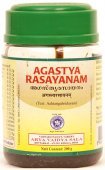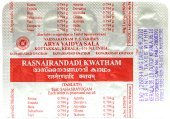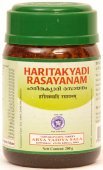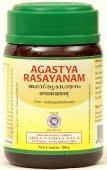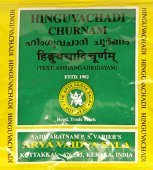Sathi, Saṭhī, Saṭhi, Shathi: 9 definitions
Introduction:
Sathi means something in Hinduism, Sanskrit, Marathi, Hindi, biology. If you want to know the exact meaning, history, etymology or English translation of this term then check out the descriptions on this page. Add your comment or reference to a book if you want to contribute to this summary article.
Biology (plants and animals)
Source: Wisdom Library: Local Names of Plants and DrugsSathi in the Sanskrit language is the name of a plant identified with Kaempferia galanga L. from the Zingiberaceae (Ginger) family. For the possible medicinal usage of sathi, you can check this page for potential sources and references, although be aware that any some or none of the side-effects may not be mentioned here, wether they be harmful or beneficial to health.
Sathi in the Hindi language is the name of a plant identified with Salvia plebeia R.Br. from the Lamiaceae (Mint) family having the following synonyms: Salvia brachiata, Salvia minutiflora.
Source: Google Books: CRC World Dictionary (Regional names)Shathi in India is the name of a plant defined with Hedychium spicatum in various botanical sources. This page contains potential references in Ayurveda, modern medicine, and other folk traditions or local practices It has the synonym Gandasulium sieboldii (Wall.) Kuntze (among others).
Example references for further research on medicinal uses or toxicity (see latin names for full list):
· Numer. List (6554)
· Observationes Botanicae (1783)
· Bot. Cab. (1818)
· Tableau Encyclopédique et Méthodique … Botanique (1791)
· Revisio Generum Plantarum (1891)
· Monandr. Pl. Scitam. (1824)
If you are looking for specific details regarding Shathi, for example diet and recipes, pregnancy safety, health benefits, side effects, extract dosage, chemical composition, have a look at these references.

This sections includes definitions from the five kingdoms of living things: Animals, Plants, Fungi, Protists and Monera. It will include both the official binomial nomenclature (scientific names usually in Latin) as well as regional spellings and variants.
Languages of India and abroad
Marathi-English dictionary
Source: DDSA: The Molesworth Marathi and English Dictionarysaṭhī (सठी).—f (ṣaṣṭhī S) A female divinity, a form of Devi. 2 Worship performed by a woman, on the sixth day from her delivery, to the goddess saṭhī and to other goddesses. 3 See saṭavāī.
--- OR ---
saṭhī (सठी).—f (saṭi S) Zedoary, Curcuma zerumbet.
--- OR ---
sāṭhī (साठी).—f (sāṭha) An aggregate of sixty. 2 The age of sixty. Pr. sāṭhī āṇi buddhi nāṭhī. 3 The state of second childhood, dotage, superannuation. 4 A kind of rice which ripens in sixty days. 5 (Or sāṭī) A light and flexile frame (composed of slit bamboos &c.) forming the flooring or deck of boats, lofts &c.; the lathing of a roof &c. 6 The bottom or bed of a gāḍā or load-cart.
--- OR ---
sāthī (साथी).—m (sārthī S through H) A companion, an associate, a comrade, a fellow: also a helper in a work, an assistant, a mate; a second in singing &c.
Source: DDSA: The Aryabhusan school dictionary, Marathi-Englishsaṭhī (सठी).—f A form of Durga. Worship per- formed by a woman, on the sixth day from her delivery, to the goddess saṭī and to other goddesses.
--- OR ---
sāṭhī (साठी).—f An aggregate of sixty. The age of sixty. Dotage.
--- OR ---
sāṭhī (साठी).—prep For the sake of; for.
--- OR ---
sāthī (साथी).—m sāthīdāra c sātī m A companion; an assistant. An accomplice.
Marathi is an Indo-European language having over 70 million native speakers people in (predominantly) Maharashtra India. Marathi, like many other Indo-Aryan languages, evolved from early forms of Prakrit, which itself is a subset of Sanskrit, one of the most ancient languages of the world.
Sanskrit dictionary
Source: DDSA: The practical Sanskrit-English dictionarySaṭhi (सठि).—f. The plant zedoary.
Derivable forms: saṭhiḥ (सठिः).
Source: Cologne Digital Sanskrit Dictionaries: Monier-Williams Sanskrit-English Dictionary1) Śaṭhī (शठी):—[from śaṭha > śaṭh] f. [wrong reading] for śaṭī, [Caraka]
2) Saṭhī (सठी):—See śaṭhī.
[Sanskrit to German]
Sanskrit, also spelled संस्कृतम् (saṃskṛtam), is an ancient language of India commonly seen as the grandmother of the Indo-European language family (even English!). Closely allied with Prakrit and Pali, Sanskrit is more exhaustive in both grammar and terms and has the most extensive collection of literature in the world, greatly surpassing its sister-languages Greek and Latin.
Hindi dictionary
Source: DDSA: A practical Hindi-English dictionarySāthī (साथी):—(nm) a companion, comrade; mate, associate; fellow; hence [sāthina] (nf).
...
Kannada-English dictionary
Source: Alar: Kannada-English corpusŚāṭhi (ಶಾಠಿ):—[noun] = ಶಾಟಿ - [shati -] 3.
--- OR ---
Sathi (ಸಥಿ):—[noun] = ಸಥೆ [sathe].
Kannada is a Dravidian language (as opposed to the Indo-European language family) mainly spoken in the southwestern region of India.
See also (Relevant definitions)
Starts with (+141): Cati, Cati-perumpan, Caticanam, Caticantalan, Caticcarakku, Catikai, Catikam, Catikarai, Catikaran, Catikaratitcai, Catikkalappu, Catikkattu, Catikkaymaram, Catikolai, Catilam, Catilinkam, Catimacam, Catimai, Catimallikai, Catiman.
Ends with (+74): Acatti, Akkinacatti, Aluptacatti, Anantacatti, Atamavimcati, Atancati, Ataracatti, Avinapavacatti, Calacati, Cankaracati, Cankiramacati, Cankirnacati, Caruvaccatti, Cati, Catti, Cinnaccati, Circatti, Civacatti, Cucati, Cukkumaparacatti.
Full-text (+140): Snanashati, Samgi-sathi, Sangin, Satavipujana, Carudhaman, Sathidara, Sangi-saathi, Sathibuddhi, Sathi-charanai, Bipata, Shati, Catipay, Satti, Amlanisha, Cattippu, Catikolai, Cayilantam, Cattikar, Cavikarpi, Catimocam.
Relevant text
Search found 13 books and stories containing Sathi, Saṭhī, Saṭhi, Shathi, Sāṭhī, Sāthī, Śaṭhī, Śāṭhī, Śāṭhi, Śaṭhi; (plurals include: Sathis, Saṭhīs, Saṭhis, Shathis, Sāṭhīs, Sāthīs, Śaṭhīs, Śāṭhīs, Śāṭhis, Śaṭhis). You can also click to the full overview containing English textual excerpts. Below are direct links for the most relevant articles:
Rasa Jala Nidhi, vol 4: Iatrochemistry (by Bhudeb Mookerjee)
Part 20 - Treatment for diarrhea (11): Purna-chandrodaya rasa < [Chapter III - Jvaratisara fever with diarrhoea]
Part 56 - Treatment for chronic diarrhea (28): Grahani-gajendra rasa < [Chapter III - Jvaratisara fever with diarrhoea]
Treatment for fever (139): Shlesma-shailendra rasa < [Chapter II - Fever (jvara)]
Sivaprakasam (Study in Bondage and Liberation) (by N. Veerappan)
Consequential bondages < [Chapter 2 - Bondage]
Three forms of deeds < [Chapter 2 - Bondage]
Sushruta Samhita, Volume 6: Uttara-tantra (by Kaviraj Kunja Lal Bhishagratna)
Chapter LII - Symptoms and Treatment of Cough (Kasa) < [Canto III - Kaya-chikitsa-tantra (internal medicine)]
Chapter LI - Symptoms and Treatment of Asthma (Shvasa) < [Canto III - Kaya-chikitsa-tantra (internal medicine)]
Chapter XLII - Symptoms and Treatment of Abdominal Tumors (Gulma) < [Canto III - Kaya-chikitsa-tantra (internal medicine)]
Matangalila and Hastyayurveda (study) (by Chandrima Das)
The Practice Manual of Noble Tārā Kurukullā (by Dharmachakra Translation Committee)
Chapter 4 < [Appendix - Sanskrit Text]
Rasa Jala Nidhi, vol 3: Metals, Gems and other substances (by Bhudeb Mookerjee)
Part 24 - Usage of poisons < [Chapter XXX - Visha (poisons)]
Related products
(+18 more products available)
